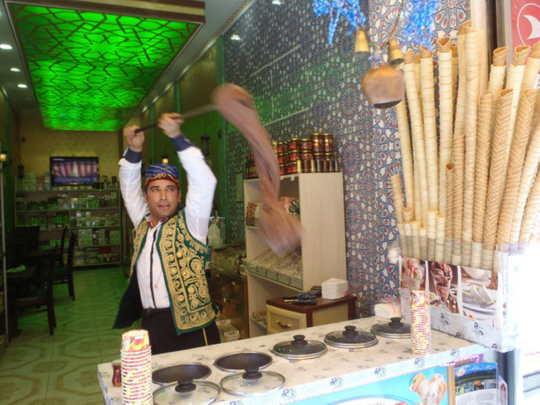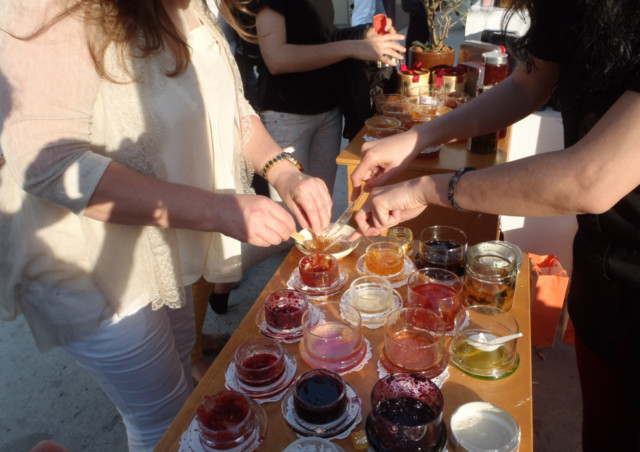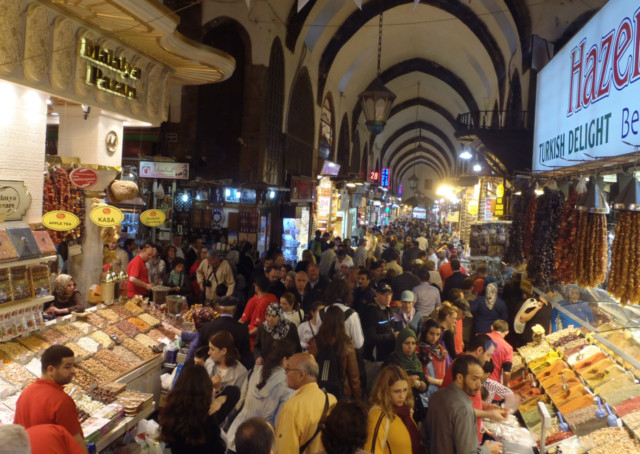
Istanbul is keen to demonstrate to the rest of the world that its gastronomic culture is not just about doner kebabs and koftas.
While these national treasures are still a part and parcel of its culture, there’s a lot more to Turkish cuisine than meets the eye. After all, the Ottomans brought fusion cooking to the Eastern Mediterranean region and have perfected it over the centuries.
Turkish cuisine turns out to be a pleasant surprise for most first-time visitors with preconceived ideas about Middle Eastern food, so it’s a good move that Istanbul introduced the world to its eclectic offerings at the city’s first-ever food and beverage festival at Kucukciftlik Park earlier this year. Restaurant Ulus 29’s truffle potato chips sprinkled with Parmesan cheese, herbs, salt and cooked in truffle oil were typical among the samples dished out to international and local guests that included food fans, chefs, producers, suppliers and cooking experts who came to taste the fare prepared predominantly by Turkish chefs from small street food outlets to Istanbul’s top-notch restaurants.
The four-day Arcelik Gastro Istanbul festival, organised in conjunction with the Turkish Restaurant and Entertainment Association in an effort to share and develop the largest city’s eating, drinking and entertainment culture, showed just how versatile Turkish cuisine can be.
But it doesn’t take a festival to encourage anyone to set off on a food treasure hunt in this fascinating historic city.
Turks still rely primarily on traditional fast food such as doner kebab, kokoretsi, börek and gözleme (see box for details), despite the growth of many major foreign fast-food chains here. In fact, doner kebabs remain the favourite street food for both visitors and locals, if VirtualTourist.com’s Top Ten Cities for Street Food survey is to be believed. It put Istanbul number seven on its list, picking the city for its doner kebabs wrapped in pitta bread.
Turkey’s burger-guzzling fraternity is still kept happy as they now get hamburgers the size and shape of those in the US (previously these were thin and flat), but include a Turkish twist such as aubergine and spices that cannot be matched anywhere else other than in Turkey.
10,000-year-old dish
Raw meat (çiğ köfte) mixed with bulgar wheat, spice, pepper and more, invented in the south-eastern Anatolia region around 10,000 years ago, has returned to the city big time as the caveman diet becomes a worldwide trend once again.
Pide and simit are ideal for boosting energy levels after a session at Kapali Çarsi (the Grand Bazaar) where touting is a national sport. The endless repartee from hawkers in one of the oldest and largest covered markets in the world — a rabbit warren of shops, hans (roadside inns), restaurants, mosques and teahouses — can be wearying for visitors unless they carry with them a sense of humour.
Turks have come to this ancient bazaar, nestling under domes of lead and glass that allow shards of sunlight through, since it started as a trading centre in 1461. They still do so today — smoking, arguing and eating while watching the world go by. In fact, more Turks than visitors frequent the backlanes on the market’s outer fringe where merchandise is cheaper. >
The same occurs at the Spice Bazaar (or Egyptian Bazaar) where Tarabya-born Huseyin Yumak has a small shop selling mostly Hazer Baba Turkish Delight that visitors buy en masse and locals buy for special occasions only, for it is not cheap. On his one day off, he escapes from the intoxicating spice filled air to the Bosphorus. “There is nothing like it anywhere else in the world,” he says.
And there isn’t when it comes to views and food. While on the good ship Nilufer 6 cruising through this strait connecting the Black Sea and Sea of Marmara, the courses won’t stop coming. Seven at the least may include Sigara boregi, midye dolma, fresh fish caught in the Bosphorus, multiple salads and fresh fruit, all washed down with a steady flow of local beverages.
On dry land, going hungry to any one of the city’s 12 Borsa restaurants is a must-do. On the menu, there’s a chocolate au soufflé (warm melted chocolate inside, cool and crunchy on the outside, served with a spoonful or two of vanilla ice-cream) worth dying for.
Yet Huseyin Sahin, Manager of the Borsa at the Isthinye Park Shopping Centre, chooses to head for a modest café in Çengelköy, overlooking the Bosphorus, for a timeout. “It’s on the Asian side of Istanbul where I love to smoke shisha, chat and eat authentic Turkish food. There are other, more popular cafés, but these are too crowded. Even celebrities go to that cafeteria,” he says.
Of Istanbul’s 3,113 mosques, the Sultanahmet Mosque (or Blue Mosque) built between 1609 and 1616 is a must visit on any traveller’s itinerary. Its grand ornate interior and imposing exterior attracts constant footfall, which is why Ismail Cheedum’s family from Antalya established their small hand-made salep dondurma (ice cream) business in a side street leading up to this famous mosque.
The secret ingredient
“My family has run this business for as long as I can remember,” he says. “I have a secret ingredient — sheep’s milk, and I add honey and mastic, which is like chewy pistachio. It makes the ice cream really elastic and unusual. The tourists love to watch me make it. They usually buy it too afterwards.”









